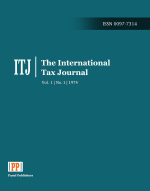Treatment of granular material with asphalt emulsion
Keywords:
base, construction, asphalt emulsion, granular material, flexible pavementAbstract
Studies were carried out on the granular material taking into account the AASTHO standards with the objective of the investigation being to determine if this granular material complies as a class 1A base to be used as a base in the pavement structure, for this the material was stabilized with asphalt emulsion. To increase resistance and give the material base characteristics, with an appropriate mix design, currently the use of granular materials treated with hydraulic binders or asphalt binders is common for the construction of bases in flexible pavements, to achieve high performance due to the increase in the repetitions and magnitudes of the loads of automotive transport. The materials used in the granular base must meet certain requirements. The support capacity will correspond to a CBR equal to or greater than 80%; The portion that passes the No. 40 sieve must have a Plasticity Index less than 6% and a Liquid Limit less than 25%; The aggregates used must have a Wear coefficient of less than 40%; and must be free of plant matter, garbage, clay lumps or substances that incorporated within the granular base layer could cause failures in the pavement.
Downloads
References
Almeida F, Sánchez E. (2011). Soil stabilization with the use of slow-breaking cationic asphalt emulsions.
ASTM D 1883-07. (2007). CBR test (California Bearing Ratio: California Bearing Ratio Test).
General Techniques for Road and Bridge Works. (2015). ORDER FOM/2523/2014. Madrid: Ministry of Public Works.
INEN 696 11. (2011). Granulometry of fine and coarse aggregates. Ecuador.
Minaya gonzález, Silene; ORDÓÑEZ HUAMAN, Abel. "Modern design of asphalt pavements." Ricardo Palma University. ICG. Institute of Construction and Management. 2006.
MINISTRY OF TRANSPORTATION AND PUBLIC WORKS (MTOPT) 001-F-2002. General Specifications for the Construction of Roads and Bridges. Ecuador.
Mrudul, U., Damodariya, S., & Parmar, N. (2016). Laboratory Investigation of Soil Stabilized using Terrasil. USA: International Journal for Scientific Research & Development.
NC 334/2004. "Roads. Flexible pavements. Calculation method." Edition 1. National Standardization Office. Cuba, 2004.
Nevi, N. E. V. (2013). Standard for road studies and designs Ecuadorian Road Standard Nevi-12-MTOP.
RODRIGO, J. N. (2015). Cold bituminous mixtures. Gravel-emulsion.
Rosero Alvarado, F. David. (2013). Bases stabilized with emulsion (Vol. 2). Quito.
Sánchez Sabogal, F. (2016). Materials for base and subbase. Retrieved from Slideshare.net: https://www.slideshare.net/castilloaroni/mdulo-7-materiales-para-base-y-subbase-fernando-snchez-sabogal
SATCC. "Code of Practice for the Design of Road Pavements". Division of Roads and Transport Technology, CSIR. South African. September 1998 (Reprinted July 2001).
Ulloa Calderón, A. (2011). Guide to laboratory tests and field sampling for quality verification of asphalt pavement materials. Methods and Materials, 1(1), 39-50. Obtained from https://revistas.ucr.ac.cr/index.php/materiales/article/view/8393/7927
Downloads
Published
How to Cite
Issue
Section
License
Copyright (c) 2024 The international tax journal

This work is licensed under a Creative Commons Attribution-NonCommercial-NoDerivatives 4.0 International License.








